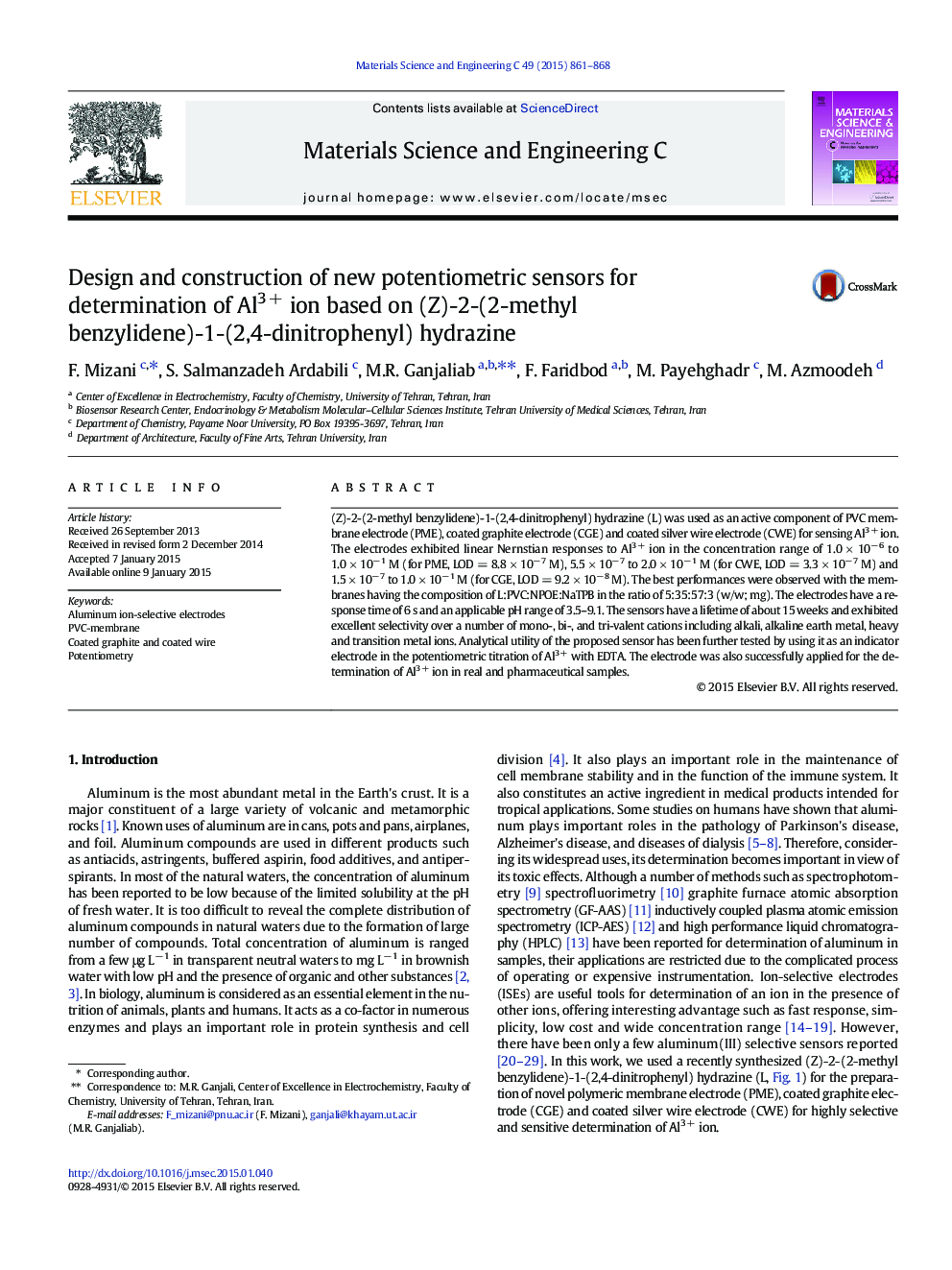| Article ID | Journal | Published Year | Pages | File Type |
|---|---|---|---|---|
| 1428246 | Materials Science and Engineering: C | 2015 | 8 Pages |
•A new hydrazine derivative (L) was used as a selectophore for Al3 + ion.•PVC membrane, coated graphite and coated silver wire electrodes were constructed.•The electrodes were applied for Al3 + analysis in real and pharmaceutical samples.
(Z)-2-(2-methyl benzylidene)-1-(2,4-dinitrophenyl) hydrazine (L) was used as an active component of PVC membrane electrode (PME), coated graphite electrode (CGE) and coated silver wire electrode (CWE) for sensing Al3 + ion. The electrodes exhibited linear Nernstian responses to Al3 + ion in the concentration range of 1.0 × 10− 6 to 1.0 × 10− 1 M (for PME, LOD = 8.8 × 10− 7 M), 5.5 × 10− 7 to 2.0 × 10− 1 M (for CWE, LOD = 3.3 × 10− 7 M) and 1.5 × 10− 7 to 1.0 × 10− 1 M (for CGE, LOD = 9.2 × 10− 8 M). The best performances were observed with the membranes having the composition of L:PVC:NPOE:NaTPB in the ratio of 5:35:57:3 (w/w; mg). The electrodes have a response time of 6 s and an applicable pH range of 3.5–9.1. The sensors have a lifetime of about 15 weeks and exhibited excellent selectivity over a number of mono-, bi-, and tri-valent cations including alkali, alkaline earth metal, heavy and transition metal ions. Analytical utility of the proposed sensor has been further tested by using it as an indicator electrode in the potentiometric titration of Al3 + with EDTA. The electrode was also successfully applied for the determination of Al3 + ion in real and pharmaceutical samples.
Graphical abstractFigure optionsDownload full-size imageDownload as PowerPoint slide
